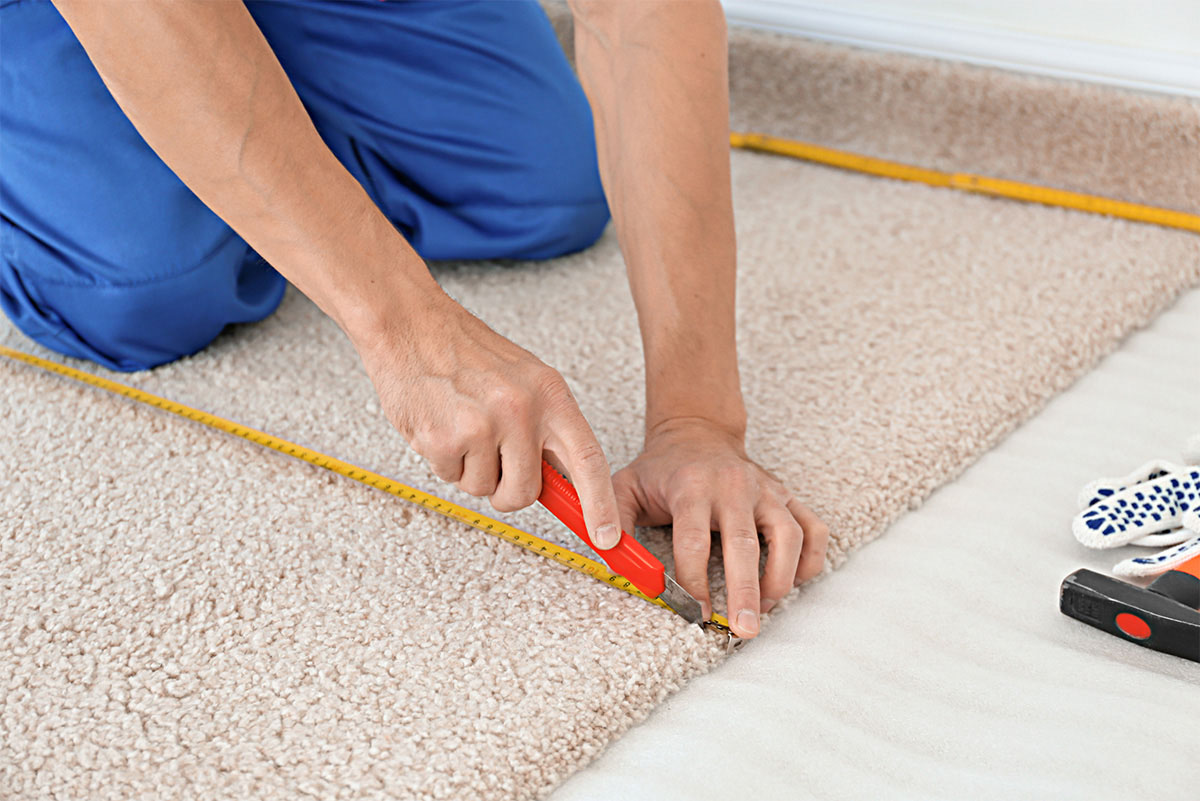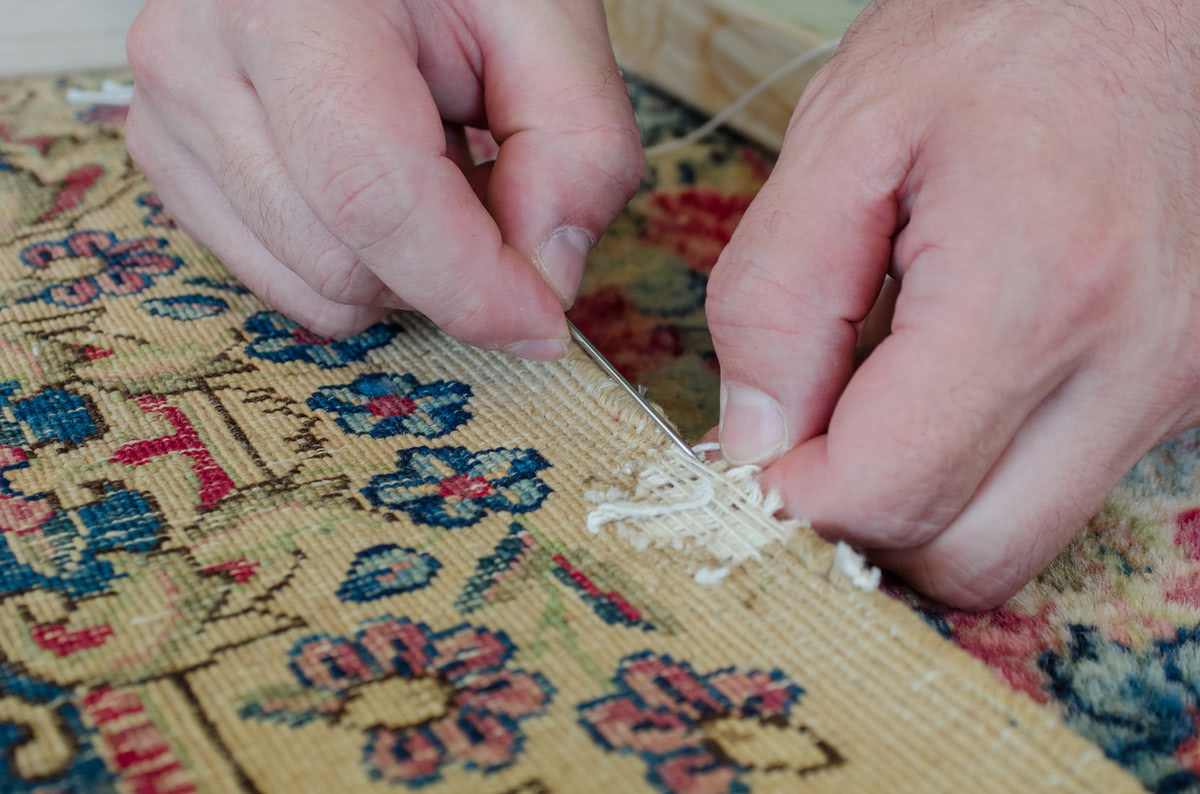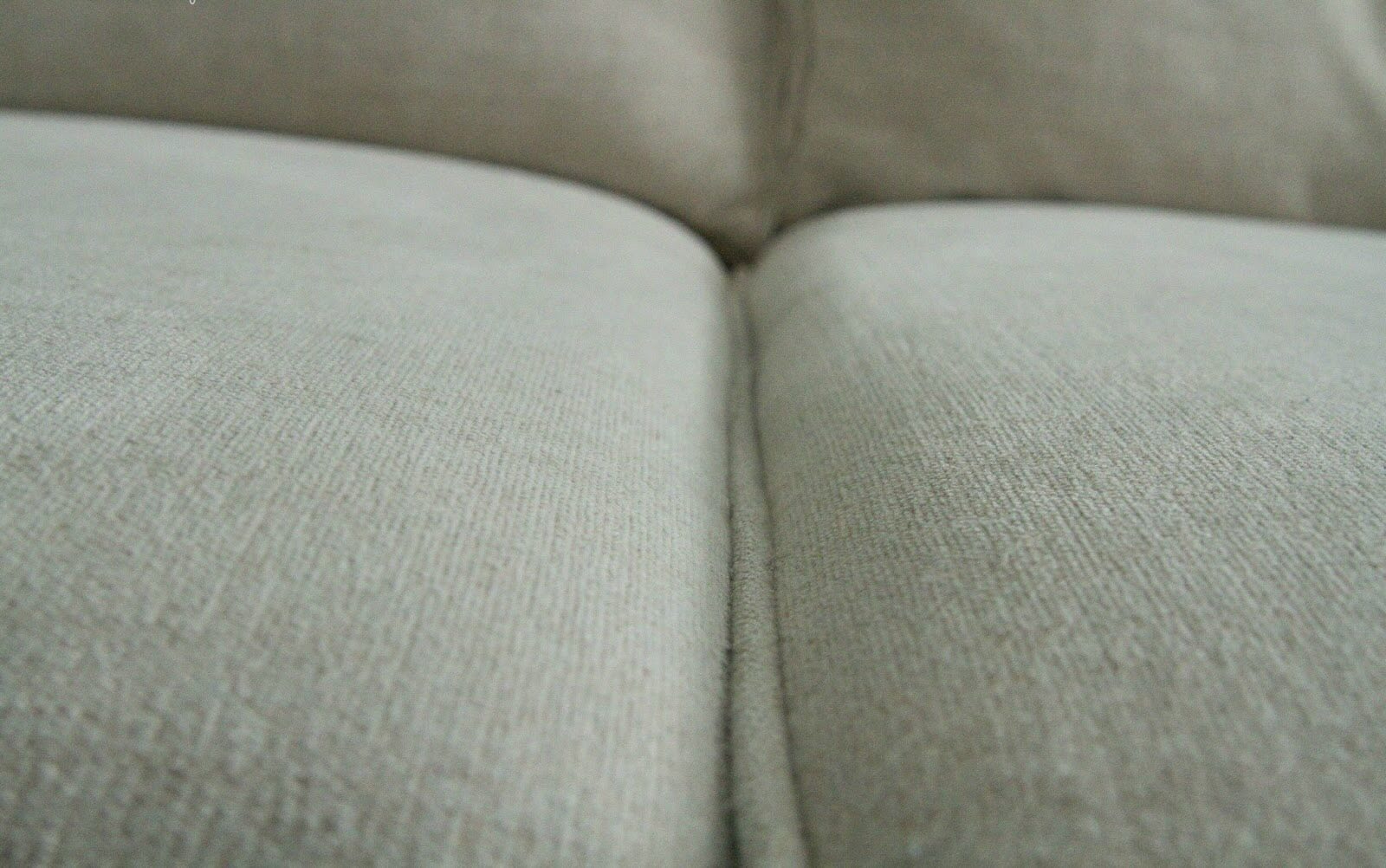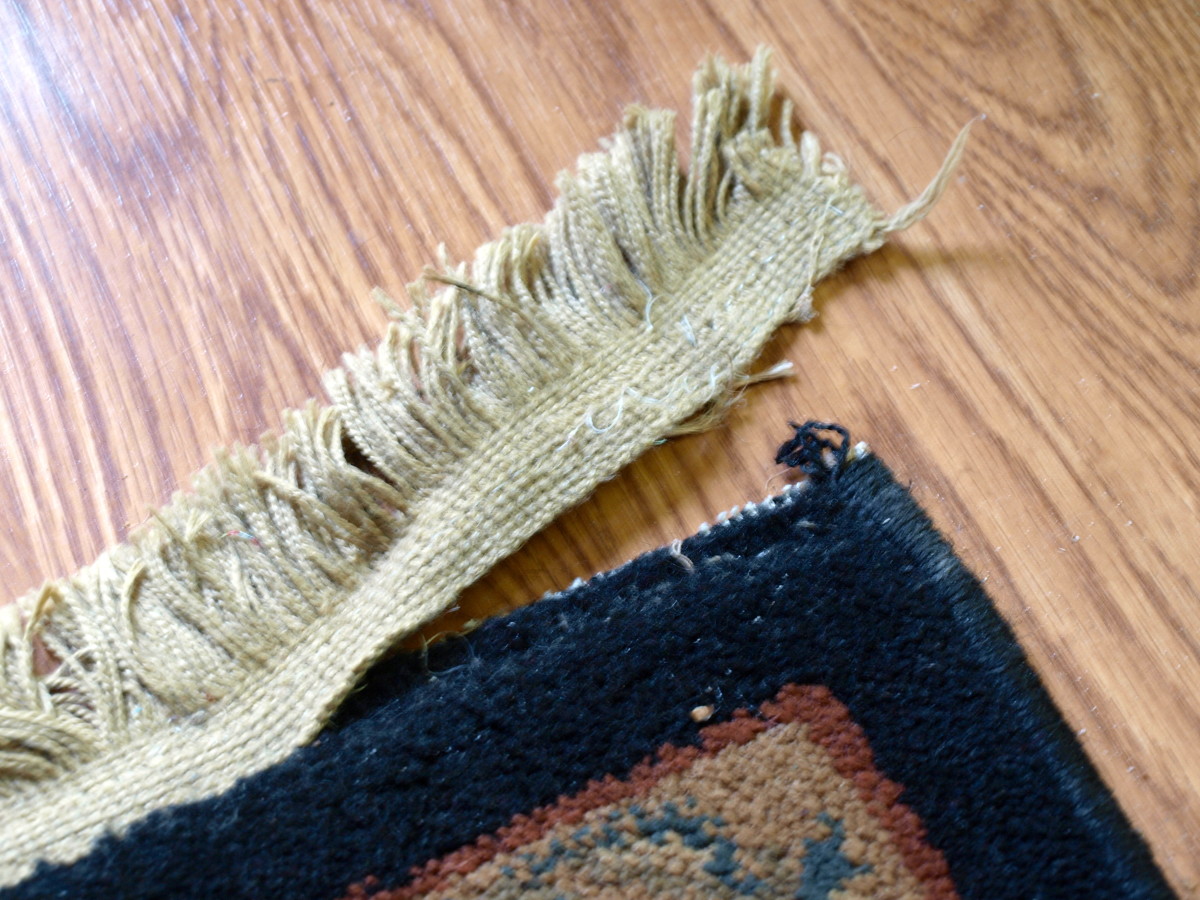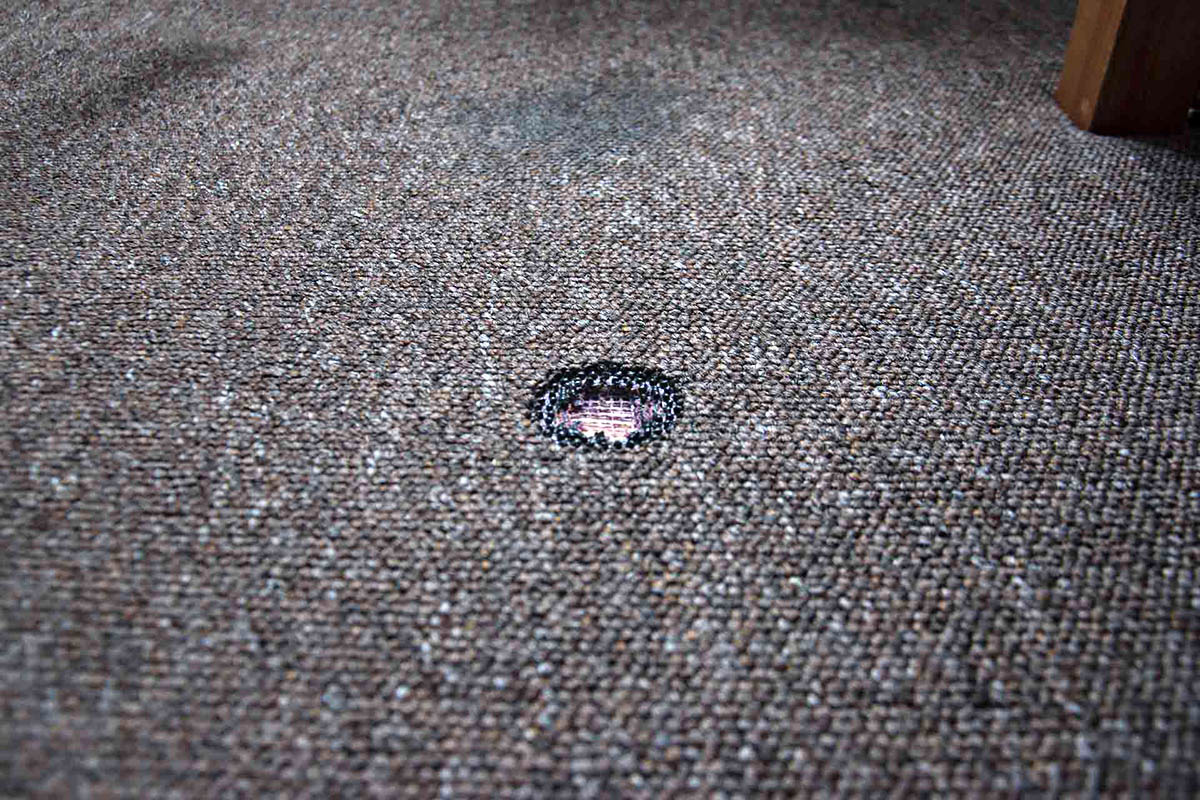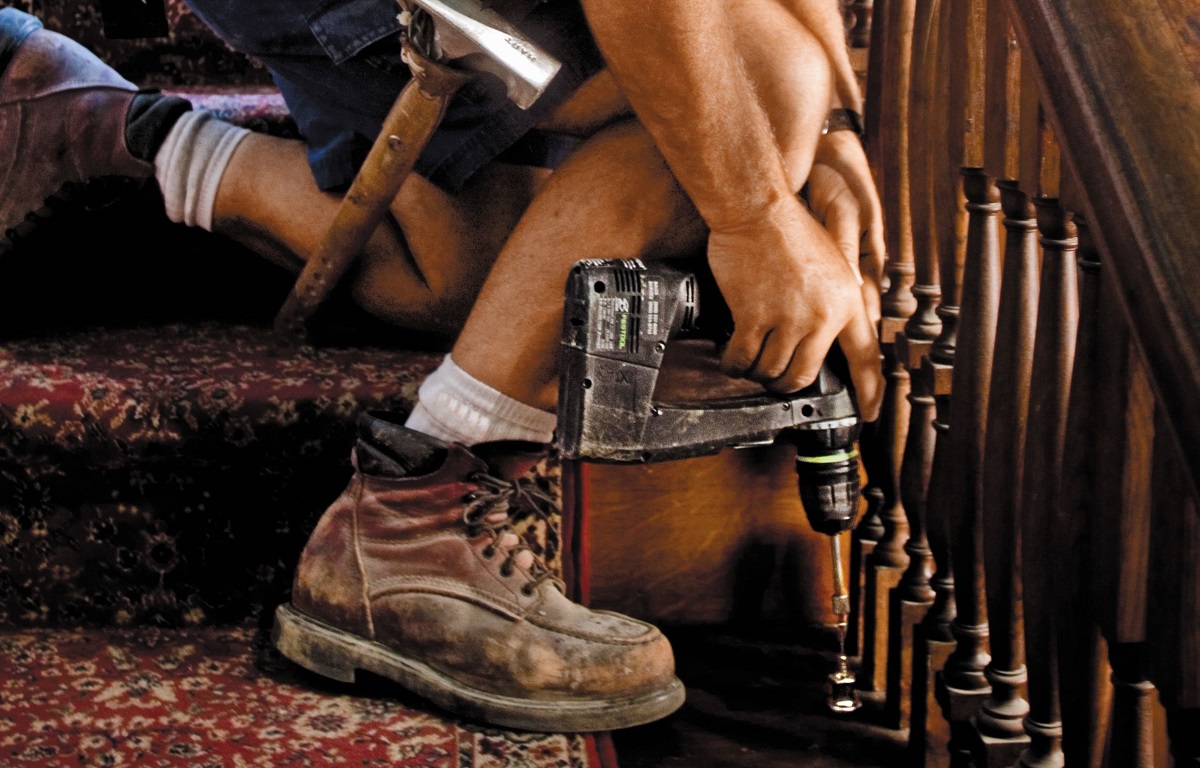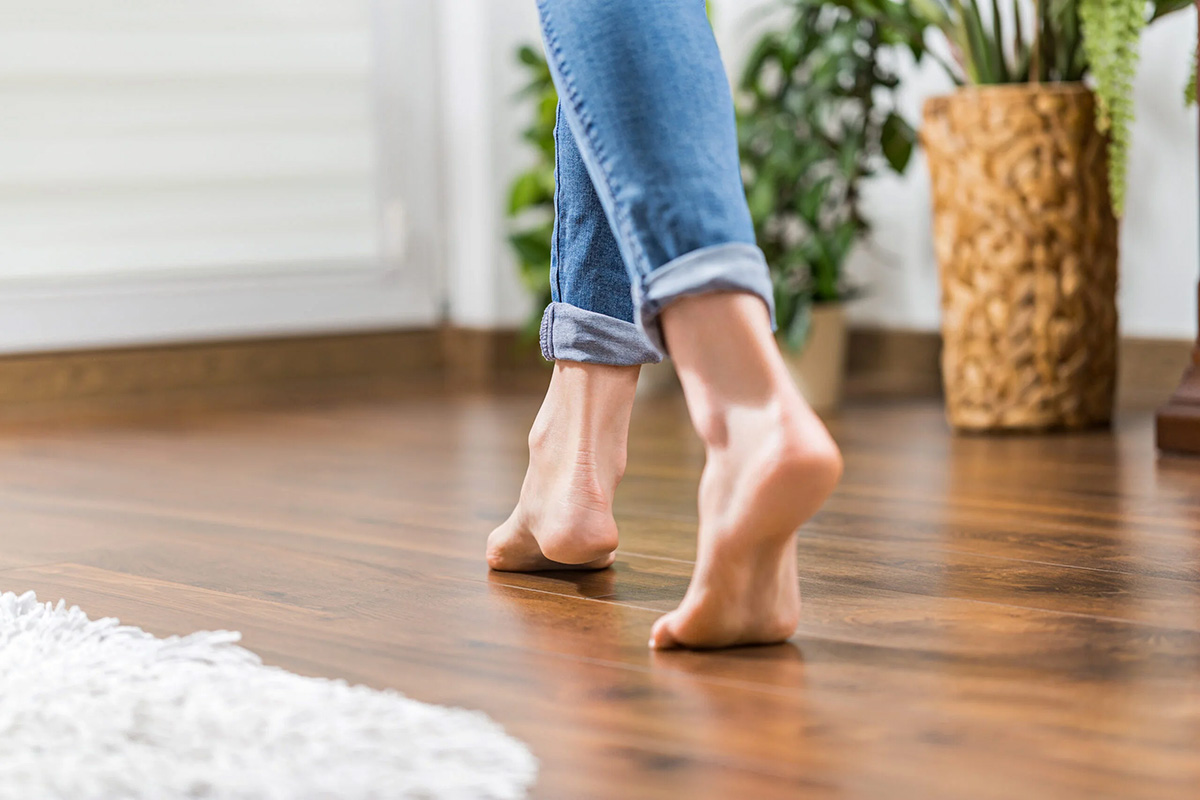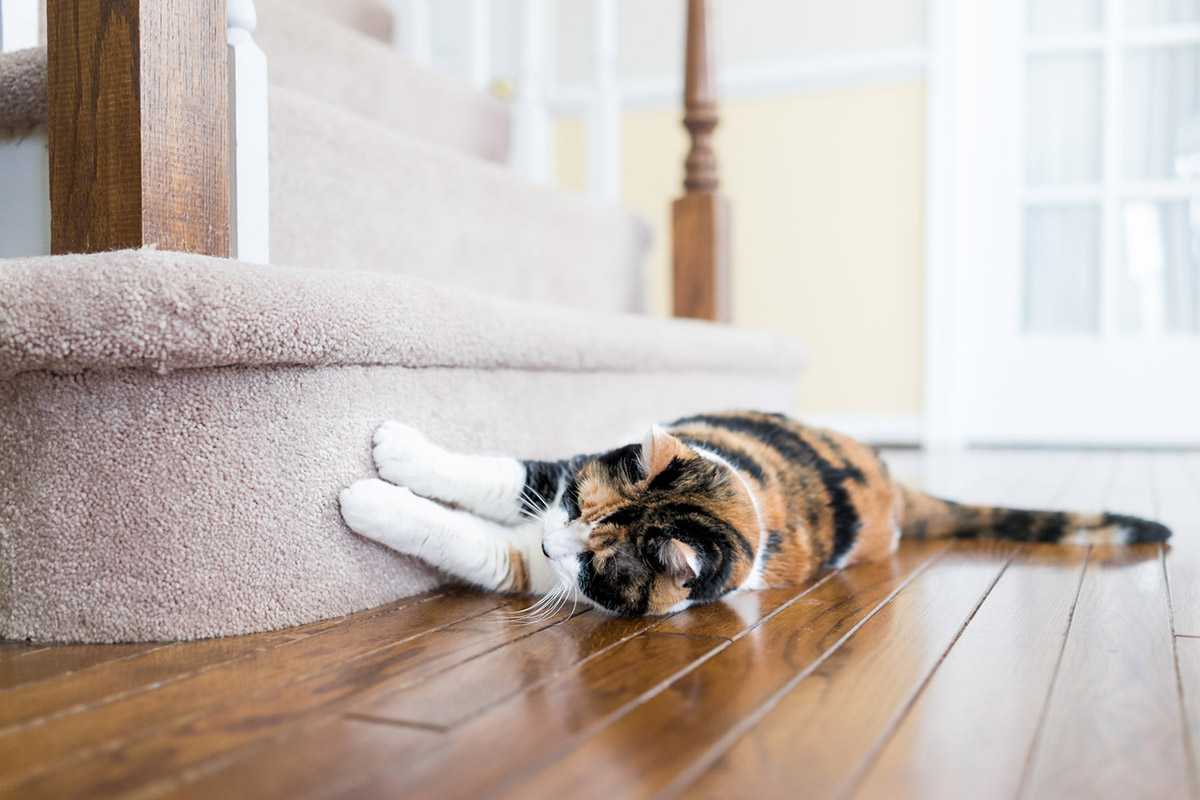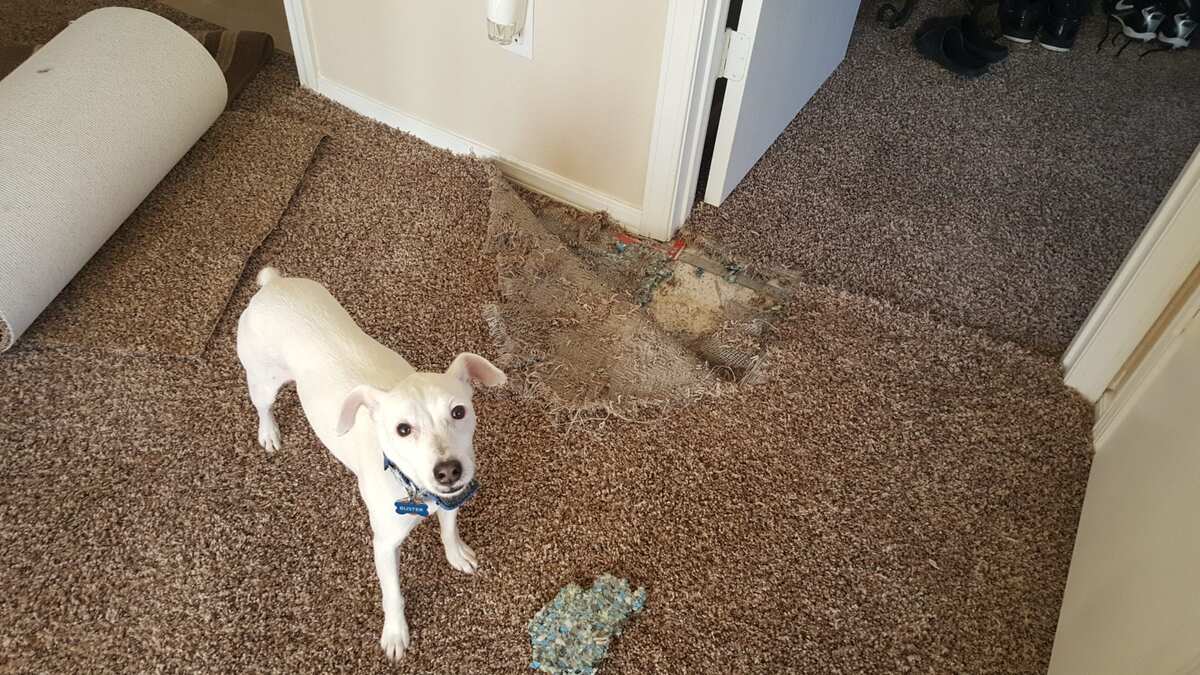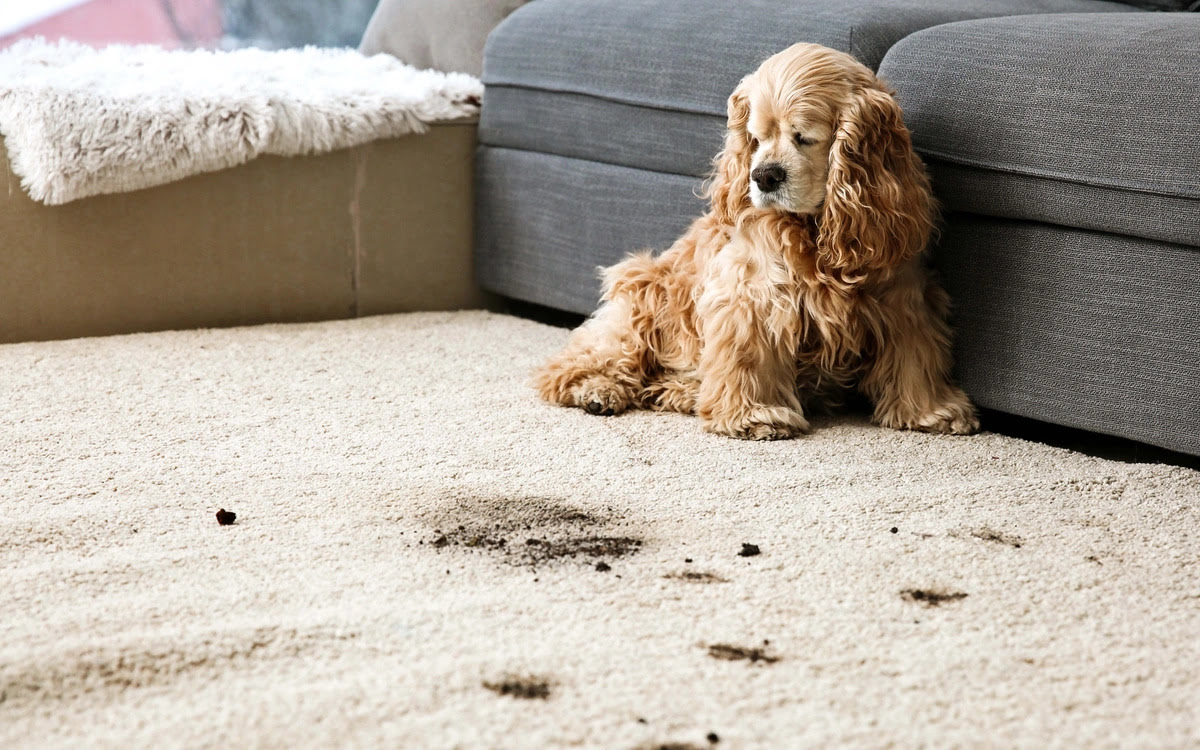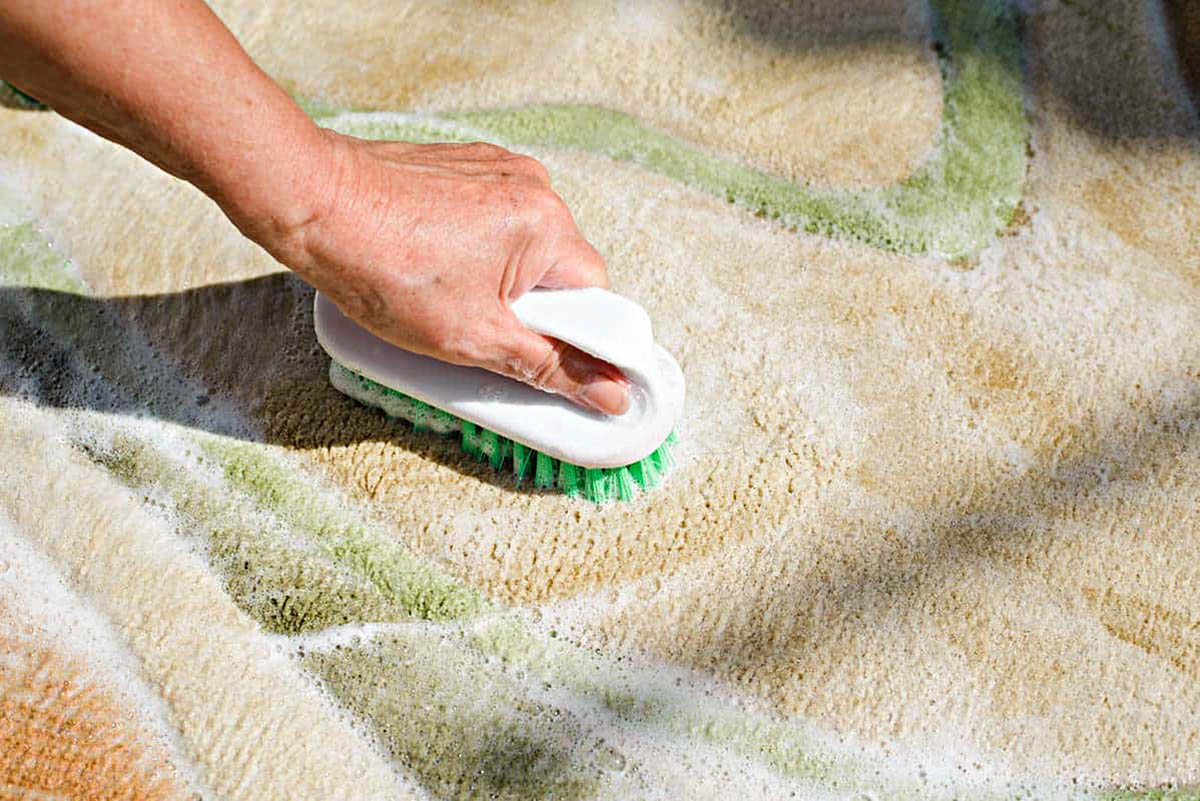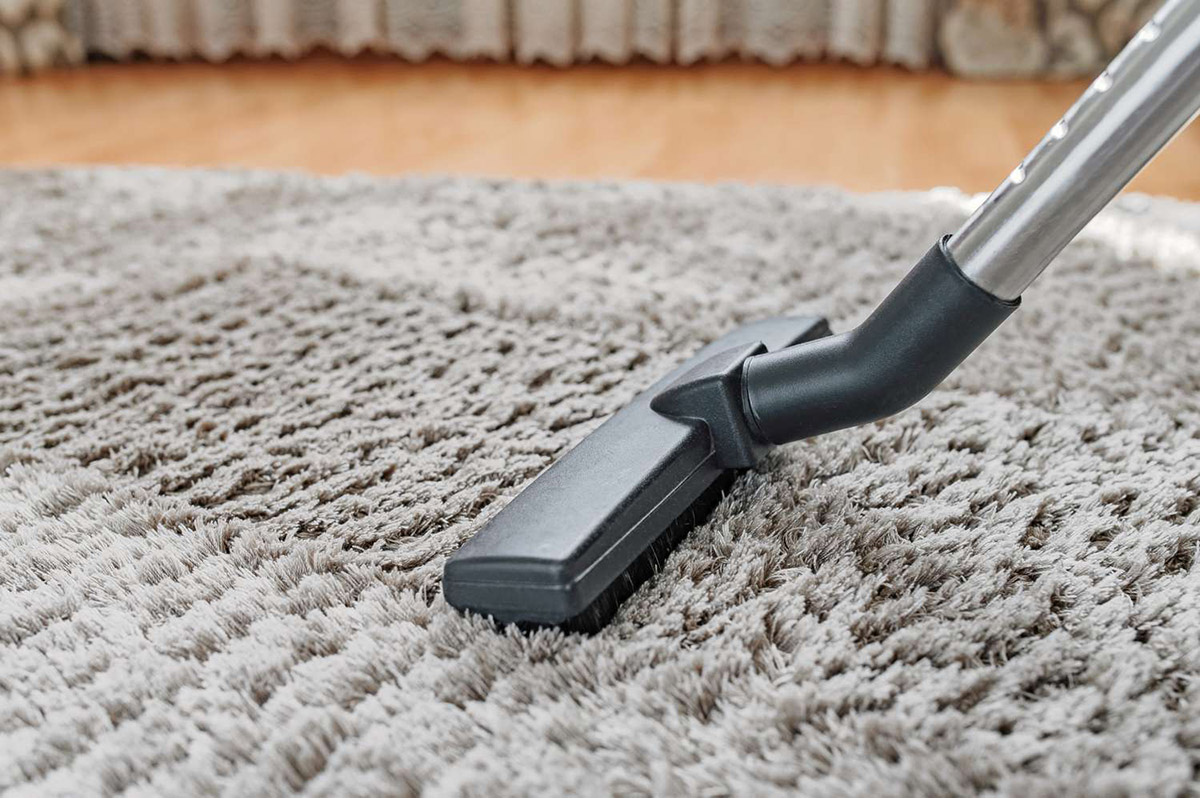

Articles
How To Fix Carpet Fuzzing
Modified: January 9, 2024
Learn effective techniques to fix carpet fuzzing in this informative articles. Get step-by-step instructions and expert tips to restore your carpet's appearance.
(Many of the links in this article redirect to a specific reviewed product. Your purchase of these products through affiliate links helps to generate commission for Storables.com, at no extra cost. Learn more)
Introduction
Welcome to our comprehensive guide on how to fix carpet fuzzing. If you've noticed your carpet becoming dull, matted, and covered in loose fibers, then you know that carpet fuzzing can be a frustrating problem. But fear not! With the right tools, materials, and technique, you can restore your carpet to its former glory.
Carpet fuzzing occurs when the yarn fibers untwist, become frayed, and create small fibers that stick out from the carpet surface. This can make your carpet look worn out and unkempt. While it may seem like a daunting task, fixing carpet fuzzing is a straightforward process that you can tackle yourself with a little bit of time and effort.
In this guide, we will explore the causes of carpet fuzzing, the tools and materials you will need, and the step-by-step process to fix carpet fuzzing. Additionally, we will discuss preventive measures to help you avoid future fuzzing issues. So, let's get started and bring back the plushness and beauty to your carpet!
Key Takeaways:
- Say goodbye to carpet fuzzing by following a simple step-by-step process. From removing loose fibers to securing edges, you can restore your carpet’s plushness and prevent future fuzzing.
- Understanding the causes of carpet fuzzing empowers you to take targeted action. With the right tools and preventive measures, you can keep your carpet looking fresh and inviting for years to come.
Read more: How To Fix A Buckling Carpet
Understanding Carpet Fuzzing
Before we dive into the process of fixing carpet fuzzing, it’s important to understand what causes this issue and how it affects the overall appearance of your carpet.
Carpet fuzzing occurs when the carpet fibers untwist and fray, resulting in loose fibers sticking out from the surface. This can happen due to various factors, such as foot traffic, pets, vacuuming techniques, or poor carpet quality.
When the carpet fibers are subjected to constant pressure from walking or moving furniture, they become compressed and lose their original shape. This compression causes the fibers to untwist, leading to fuzzing. Additionally, aggressive vacuuming or using a vacuum with a brush roll that is not suitable for your carpet type can also contribute to fuzzing.
Carpet fuzzing not only affects the aesthetic appeal of your carpet but also reduces its durability. The loose fibers can get tangled and entwined, making the carpet appear dull and worn out. Moreover, the fuzz can collect dirt and debris, further deteriorating the carpet’s condition.
By understanding the causes of carpet fuzzing, you can take preventative measures to minimize the risk and address the issue promptly when it arises. So, let’s move on to the next section to explore the causes of carpet fuzzing in more detail.
Causes of Carpet Fuzzing
Carpet fuzzing can occur due to a variety of reasons. Understanding these causes will help you identify the root of the problem and take appropriate measures to prevent or address it. Here are some common causes of carpet fuzzing:
- Foot Traffic: Heavy foot traffic is one of the primary causes of carpet fuzzing. The constant pressure from people walking on the carpet can compress and untwist the fibers over time, resulting in fuzzing.
- Pets: If you have pets that frequently run or scratch on the carpet, it can accelerate the fuzzing process. Their nails can catch and pull the fibers, causing them to untwist and fray.
- Aggressive Vacuuming: Vacuuming with a brush roll that is not suitable for your carpet type or using excessive force can cause the fibers to become untwisted and lead to fuzzing.
- Poor Carpet Quality: Low-quality carpets are more prone to fuzzing. If the fibers are not tightly twisted or if the carpet is made from inferior materials, it is more likely to experience fuzzing issues.
- Chemical Exposure: Harsh chemicals or cleaning agents can damage the fibers of your carpet, making them more susceptible to fuzzing.
- Improper Maintenance: Failing to maintain and care for your carpet properly can contribute to fuzzing. This includes neglecting regular vacuuming, not addressing spills or stains promptly, and not following recommended cleaning guidelines.
Identifying the specific cause of carpet fuzzing in your case will help you take targeted action to fix the issue. Whether it’s reducing foot traffic in high-usage areas, using pet-friendly carpeting, adjusting your vacuuming technique, or investing in high-quality carpets, understanding the causes allows you to make informed decisions to prevent or address carpet fuzzing.
Tools and Materials Needed
Now that you understand the causes of carpet fuzzing, it’s time to gather the necessary tools and materials to fix the problem. Here’s a list of what you’ll need:
- Sharp Scissors: You’ll need a pair of sharp scissors with pointed tips to trim the excess fibers.
- Lint Roller: A lint roller will help you remove loose fuzz and fibers from the carpet surface.
- Vacuum Cleaner: A vacuum cleaner with adjustable settings and a brush roll suitable for your carpet type is essential for regular maintenance.
- Carpet Rake: A carpet rake with soft bristles can be used to fluff up the carpet fibers and restore their original appearance.
- Carpet Adhesive: If you have loose edges or seams, a carpet adhesive can help secure them back in place.
- Carpet Protector Spray: Consider using a carpet protector spray to prevent future fuzzing and protect your carpet from spills and stains.
Additionally, it’s important to keep a clean and clutter-free work area. Remove any furniture or obstacles that may hinder your progress when working on the carpet.
By having these tools and materials on hand, you’ll be well-equipped to tackle the carpet fuzzing issue efficiently and effectively. Now let’s move on to the step-by-step process of fixing carpet fuzzing.
Step 1: Preparing the Area
Before you begin fixing carpet fuzzing, it’s important to prepare the area to ensure a smooth and effective process. Follow these steps to get started:
- Clean the Carpet: Start by thoroughly vacuuming the carpet to remove any loose dirt, debris, or pet hair. This will provide a clean surface to work on and prevent any additional fuzzing.
- Clear the Work Area: Remove any furniture, rugs, or objects from the area you’ll be working on. This will give you ample space to maneuver and access the carpet without any obstructions.
- Inspect the Carpet: Take a close look at the carpet and identify the areas with excessive fuzzing. Pay attention to loose edges, seams, or specific spots where the fuzzing is concentrated.
- Test the Carpet: If you’re using any cleaning agents or carpet protectors, it’s recommended to test them on a small inconspicuous area of the carpet first to ensure they don’t cause any discoloration or damage.
By taking the time to prepare the area, you’ll create an optimal environment for fixing carpet fuzzing. This will help you work efficiently and minimize any potential risks or complications during the process.
Now that you’ve prepped the area, it’s time to move on to the next step: removing loose fuzz from the carpet surface. Continue reading to learn how to tackle this in step 2.
Read more: How To Fix Carpet On Stairs
Step 2: Removing Loose Fuzz
With the area prepared, it’s time to tackle the next step in fixing carpet fuzzing: removing loose fuzz from the carpet surface. Follow these steps to effectively eliminate the loose fibers:
- Use a Lint Roller: Start by using a lint roller to gently roll over the carpet surface. The sticky surface of the lint roller will pick up and remove loose fibers, fuzz, and lint.
- Work in Sections: Divide the carpet into manageable sections and focus on one section at a time. This will ensure thorough cleaning and prevent you from missing any areas.
- Apply Light Pressure: Apply light pressure when using the lint roller to avoid damaging the carpet fibers. Roll in a back-and-forth motion and change the direction occasionally to cover the entire section.
- Empty the Lint Roller: Regularly check and empty the lint roller as it accumulates fuzz and debris. This will prevent it from becoming too full and losing its effectiveness.
- Repeat if Necessary: If there are still visible fuzz or loose fibers on the carpet surface after using the lint roller, gently pat the area with a clean, damp cloth to remove any remaining particles.
By systematically removing loose fuzz from the carpet surface, you’re eliminating the most visible and easily removable debris. This will lay the foundation for the next steps in restoring your carpet’s appearance. Now that you’ve removed the loose fuzz, it’s time to move on to step 3: trimming excess fibers.
Use a pair of sharp scissors to carefully trim any fuzz or loose fibers on the carpet. Be gentle to avoid cutting the carpet pile.
Step 3: Trimming Excess Fibers
Now that you’ve removed the loose fuzz from the carpet surface, it’s time to address any excess fibers that may be contributing to the fuzzing. Follow these steps to effectively trim the excess fibers:
- Inspect the Carpet: Take a close look at the carpet and identify areas with longer or uneven fibers. These are the areas where you’ll focus your trimming efforts.
- Use Sharp Scissors: Take a pair of sharp scissors with pointed tips and carefully trim the excess fibers. Ensure that you’re only trimming the fibers that are sticking out and not cutting into the carpet base.
- Trim in Small Sections: Work in small sections and trim the excess fibers slowly and carefully. This will allow you to have better control and prevent any accidental damage to the carpet.
- Trim at a Slight Angle: When trimming the fibers, aim to cut them at a slight angle rather than straight across. This will help the trimmed fibers blend in with the surrounding carpet and create a more seamless appearance.
- Refrain from Over-Trimming: As you trim the excess fibers, be cautious not to over-trim or cut too close to the carpet surface. This can lead to unevenness or create bald patches on the carpet.
Remember to take your time and be patient when trimming the excess fibers. It’s better to make small, precise trims rather than taking off too much at once. By effectively trimming the excess fibers, you’re removing the potential source of further fuzzing and enhancing the overall appearance of the carpet.
With step 3 complete, it’s time to move on to step 4: securing any loose edges or seams. Continue reading to learn how to tackle this next important step.
Step 4: Securing Loose Edges
If you notice any loose edges or seams in your carpet, it’s essential to secure them to prevent further fuzzing and maintain a neat appearance. Follow these steps to effectively secure loose edges:
- Identify the Loose Edges: Inspect the carpet and identify any areas where the edges are coming loose or seams are separating.
- Clean the Area: Before securing the loose edges, ensure that the area is clean and free from any debris. Remove any dirt or particles that may interfere with the adhesive.
- Apply Carpet Adhesive: Use a carpet adhesive specifically designed for securing loose edges. Apply a thin layer of adhesive along the edge or seam, following the manufacturer’s instructions.
- Press the Carpet: Once the adhesive is applied, carefully press the loose edge or seam back in place. Apply firm pressure to ensure a strong bond between the carpet and the floor.
- Wipe off Excess Adhesive: Use a clean cloth or sponge to wipe off any excess adhesive that oozes out during the pressing process.
- Allow to Dry: Let the adhesive dry according to the manufacturer’s instructions before allowing any foot traffic or placing furniture back on the carpet.
Securing loose edges is crucial to preventing further fuzzing and maintaining the structural integrity of your carpet. By following these steps, you can ensure that the edges are properly secured and eliminate any potential tripping hazards.
With step 4 complete, it’s time to move on to step 5: restoring the carpet’s fluffiness. Continue reading to learn how to bring back the plushness to your carpet.
Step 5: Restoring Carpet Fluffiness
After addressing loose fibers and securing any loose edges, it’s time to restore the plushness and fluffiness to your carpet. Follow these steps to effectively restore your carpet’s appearance:
- Use a Carpet Rake: Start by using a carpet rake with soft bristles to gently fluff up the carpet fibers. The rake will help restore the original shape of the fibers and enhance the overall appearance of the carpet.
- Rake in Multiple Directions: Rake the carpet in different directions, including against the natural grain of the fibers. This will help loosen any matted areas and ensure an even fluffiness across the entire carpet.
- Apply Pressure as Needed: Apply gentle pressure while raking to create resistance and encourage the fibers to stand upright. However, be cautious not to apply excessive pressure that could damage the carpet.
- Fluff High-Traffic Areas: Pay extra attention to high-traffic areas such as hallways, entryways, or living room areas. These areas tend to experience more compression and may require additional fluffing.
By using a carpet rake and gently fluffing the fibers, you can revive the carpet’s plushness and give it a fresh, rejuvenated look. This step is crucial in bringing back the initial softness and texture of your carpet.
With step 5 completed, you’re almost done with the carpet fuzzing repair process. The final step is to take preventive measures to avoid future fuzzing. Continue reading to learn how to keep your carpet in great condition.
Read more: How To Fix A Pulled Carpet
Step 6: Preventing Future Fuzzing
After fixing carpet fuzzing, it’s important to take preventive measures to ensure it doesn’t happen again in the future. Follow these steps to protect your carpet and maintain its pristine condition:
- Use Carpets Suitable for High Traffic Areas: In high-traffic areas, consider using carpets that are specifically designed to withstand heavy use and resist fuzzing.
- Take Off Shoes: Encourage family members and guests to remove their shoes before walking on the carpet. This helps minimize the amount of dirt and debris that can get trapped in the fibers and cause fuzzing.
- Place Mats and Rugs: Use mats or rugs in high-traffic areas to help distribute the weight and reduce the direct impact on the carpet fibers.
- Vacuum Regularly: Establish a regular vacuuming routine to remove dirt, dust, and debris that can contribute to fuzzing. Use a vacuum cleaner with adjustable settings to avoid excessive force.
- Use Proper Vacuum Attachments: Choose vacuum attachments that are suitable for your carpet type. Opt for those with gentle bristles or suction-only options to avoid aggressive agitation that may cause fuzzing.
- Address Spills and Stains Promptly: Clean up spills and stains as soon as they occur to prevent them from seeping into the carpet and causing damage. Follow the recommended cleaning guidelines for your specific carpet type.
- Rotate Furniture: Periodically move and rotate furniture to minimize the wear and tear on specific areas of the carpet.
- Protect with Carpet Sprays: Consider using a carpet protector spray to create a barrier against spills, stains, and fuzzing. Follow the manufacturer’s instructions for proper application.
By implementing these preventive measures, you can extend the lifespan of your carpet and maintain its original beauty. Regular maintenance and conscious efforts to protect your carpet will minimize the risk of future fuzzing issues.
Congratulations! You’ve successfully gone through the step-by-step process of fixing carpet fuzzing and learned how to prevent it in the future. By following these guidelines, you can keep your carpet looking fresh, fluffy, and inviting for years to come.
Remember, a well-maintained carpet not only enhances the aesthetics of your space but also creates a comfortable and cozy environment for you and your family to enjoy.
So, put these tips into action and enjoy your newly restored carpet!
Conclusion
Carpet fuzzing can be a frustrating problem that affects the appearance and durability of your carpet. However, with the right tools, materials, and techniques, you can successfully fix the issue and restore your carpet to its former glory.
In this comprehensive guide, we’ve covered the causes of carpet fuzzing, the tools and materials needed, and the step-by-step process to fix carpet fuzzing. By understanding the root causes, you can take proactive measures to prevent fuzzing in the future.
Remember to prepare the area before starting, remove loose fuzz, trim excess fibers, and secure any loose edges or seams. Afterward, use a carpet rake to restore the fluffiness and finish off by implementing preventive measures to avoid future fuzzing.
Regular maintenance, such as vacuuming, prompt stain removal, and using suitable cleaning methods, is essential in keeping your carpet in excellent condition. Additionally, using carpets designed for high-traffic areas and incorporating protective measures can significantly reduce the risk of fuzzing.
By taking the time and effort to address carpet fuzzing, you can breathe new life into your carpet, enhance the overall aesthetic of your space, and prolong the lifespan of your flooring investment.
Now armed with the knowledge and techniques outlined in this guide, you can confidently tackle carpet fuzzing and enjoy a fresh, beautiful carpet that adds comfort and warmth to your home.
So, go ahead and put these tips into practice. Your revitalized carpet awaits!
Frequently Asked Questions about How To Fix Carpet Fuzzing
Was this page helpful?
At Storables.com, we guarantee accurate and reliable information. Our content, validated by Expert Board Contributors, is crafted following stringent Editorial Policies. We're committed to providing you with well-researched, expert-backed insights for all your informational needs.
